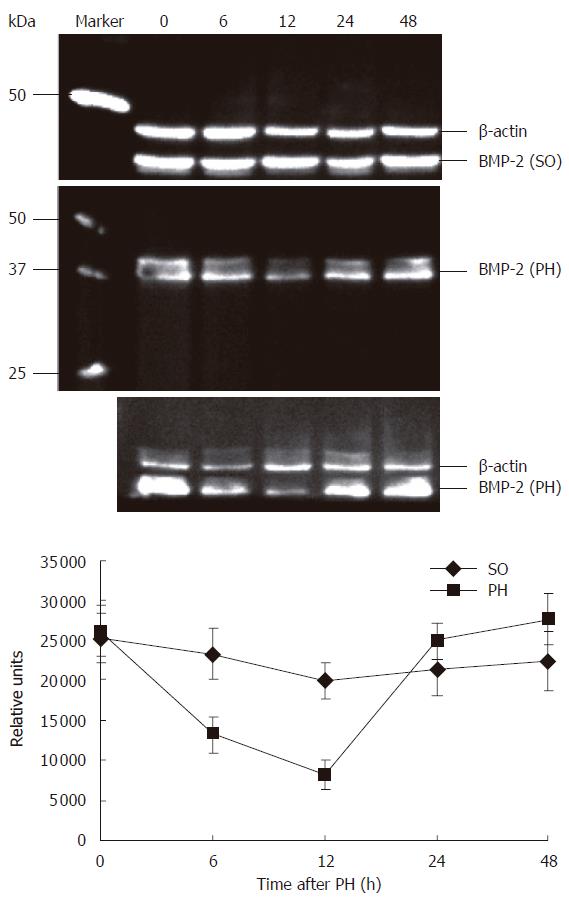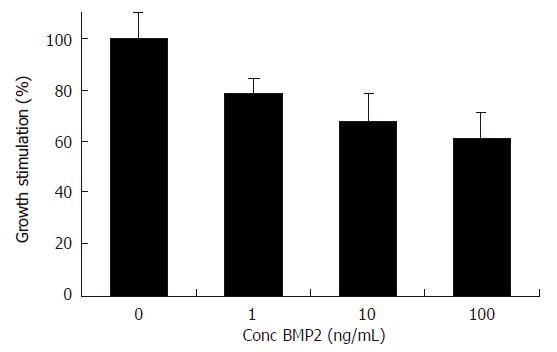Copyright
©2006 Baishideng Publishing Group Co.
World J Gastroenterol. Dec 21, 2006; 12(47): 7621-7625
Published online Dec 21, 2006. doi: 10.3748/wjg.v12.i47.7621
Published online Dec 21, 2006. doi: 10.3748/wjg.v12.i47.7621
Figure 1 By immunohistochemistry, BMP-2 is expressed predominantly in hepatocytes around the central vein and portal triad.
Strong BMP-2 staining is seen localized to the cytoplasm of NC group (A). The strong BMP-2 staining seen in normal tissue is lost at 6,12 h group (B,C) and resumes at 48 h group (D) following PH. There was no significant change in SO group compared with NC group in BMP-2 immunoreactivity (data not shown). Control stainings were performed by omitting the primary antibody and using a control IgG2b that showed no staining. A known positive staining specimen was used as a positive control (data not shown). (A, B, C, and D x 200).
Figure 2 Immunoblot for BMP-2 in rat liver of NC, SO and PH groups.
At all the time points (note: 0 h = NC), rat liver extracts tested showed a band at approximately 37 kDa on the immunoblots. Bio-Rad Precision Protein Standards were used. Equal protein loading was confirmed using β-actin antibodies on the same blots by striping the old antibodies in strip buffer. The calculated molecular weights are shown. Quantification of 12 h immunoblots revealed 3.22 fold lower (P < 0.01) BMP-2 protein expression levels in PH group as compared with NC group. BMP-2 protein levels increased progressively to that of NC group at 48 h after PH.
Figure 3 MTT assay of human hepatoma Huh7 cell line treated for 72 h with various concentrations of BMP2.
Values obtained with no BMP2 were set at 100. Error bars represent the standard error of the mean. BMP-2 inhibited the growth of Huh7 cells, maximal effects occurring at 100 ng/mL after 72 h incubation. BMP-2 significantly inhibited the growth of Huh7 cells by 38.8% ± 0.4% (P < 0.01).
- Citation: Xu CP, Ji WM, Brink GRVD, Peppelenbosch MP. Bone morphogenetic protein-2 is a negative regulator of hepatocyte proliferation downregulated in the regenerating liver. World J Gastroenterol 2006; 12(47): 7621-7625
- URL: https://www.wjgnet.com/1007-9327/full/v12/i47/7621.htm
- DOI: https://dx.doi.org/10.3748/wjg.v12.i47.7621











